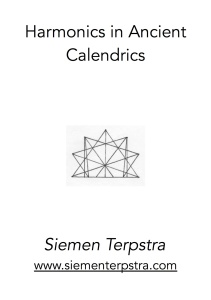 The study of harmonics is usually and rightfully associated with musical tuning theory. However, another appropriate context for this branch of arithmetic is the establishment of a calendar. In both situations, the procedure rests fundamentally on the measurement of a time period for a vibratory event. In the case of tuning theory, these cyclical interactions happen very quickly–hundreds, even thousands of periods per second. Consequently it is convenient to use the concept of frequency (cycles per second) as a descriptive device. In the case of calendrics, we are still measuring a physical vibratory event, but the time periods are very long; consequently, the frequency numbers are very low. It becomes more convenient to express measurements by period. For example, the year cycle is about 365 days long. We could convert this number of days to seconds (a big number!), and the invert the ratio to give us the frequency. In other words, frequency and period stand in inverse relation to each other.
The study of harmonics is usually and rightfully associated with musical tuning theory. However, another appropriate context for this branch of arithmetic is the establishment of a calendar. In both situations, the procedure rests fundamentally on the measurement of a time period for a vibratory event. In the case of tuning theory, these cyclical interactions happen very quickly–hundreds, even thousands of periods per second. Consequently it is convenient to use the concept of frequency (cycles per second) as a descriptive device. In the case of calendrics, we are still measuring a physical vibratory event, but the time periods are very long; consequently, the frequency numbers are very low. It becomes more convenient to express measurements by period. For example, the year cycle is about 365 days long. We could convert this number of days to seconds (a big number!), and the invert the ratio to give us the frequency. In other words, frequency and period stand in inverse relation to each other.
Click on the link to see the article in your browser or right-click to save the file to your drive.

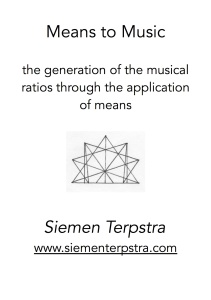 We usually understand the ratios of JI as derived from the Harmonic Series. Any Just interval can be viewed as a frequency ratio between two whole numbers, numbers which refer directly to the Series itself. However, it may not be generally appreciated that there is also an alternative way to generate the Just ratios. This method has great historical importance as well as being of intrinsic interest in itself. I refer to the procedure of examining the
We usually understand the ratios of JI as derived from the Harmonic Series. Any Just interval can be viewed as a frequency ratio between two whole numbers, numbers which refer directly to the Series itself. However, it may not be generally appreciated that there is also an alternative way to generate the Just ratios. This method has great historical importance as well as being of intrinsic interest in itself. I refer to the procedure of examining the 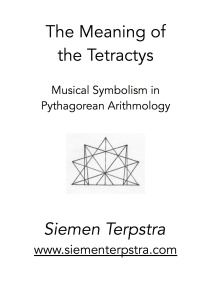 The Tetractys symbol is an exquisite example of how a simple visual pattern can have multi-varied meanings and ‘levels’ of interpretive significance. The famous Pythagorean oath refers to the Tetractys, praising it as the source “which contains the fount and root of eternal nature”. A profusion of insights can be derived from the image, concepts which are relevant to arithmetic (number relations), harmonics (musical tuning theory), and geometry (number relations in space). Only a pitifully small amount of ancient commentary has been perserved; but the study of the above disciplines uncovers more and more relevance for the symbol. In this short paper, I will briefly review some historical interpretations and offer a few insights of my own that come from extensive work in harmonics and sacred geometry.
The Tetractys symbol is an exquisite example of how a simple visual pattern can have multi-varied meanings and ‘levels’ of interpretive significance. The famous Pythagorean oath refers to the Tetractys, praising it as the source “which contains the fount and root of eternal nature”. A profusion of insights can be derived from the image, concepts which are relevant to arithmetic (number relations), harmonics (musical tuning theory), and geometry (number relations in space). Only a pitifully small amount of ancient commentary has been perserved; but the study of the above disciplines uncovers more and more relevance for the symbol. In this short paper, I will briefly review some historical interpretations and offer a few insights of my own that come from extensive work in harmonics and sacred geometry.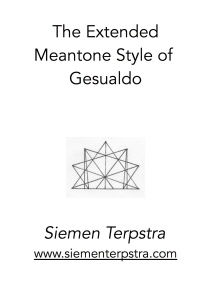 The author re-examines the syntax of Gesualdo’s musical style in the light of the intonational practices of his time. A theoretical structure with which to describe his harmonic practices, and those of other 16th Century composers, is developed. The historical context is presented as well as a series of analyses of Gesualdo’s music.
The author re-examines the syntax of Gesualdo’s musical style in the light of the intonational practices of his time. A theoretical structure with which to describe his harmonic practices, and those of other 16th Century composers, is developed. The historical context is presented as well as a series of analyses of Gesualdo’s music.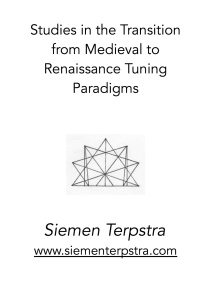 The author explains how tendencies within the structure of the Pythagorean chromatic scale supported the transfer to Just Intonation; however, certain features of Just Intonation necessitated the application of some form of temperament. The meantone temperament formed the best compromise for the musical styles that were being explored. The author aims at a co-relation between tuning paradigm and associated musical style.
The author explains how tendencies within the structure of the Pythagorean chromatic scale supported the transfer to Just Intonation; however, certain features of Just Intonation necessitated the application of some form of temperament. The meantone temperament formed the best compromise for the musical styles that were being explored. The author aims at a co-relation between tuning paradigm and associated musical style.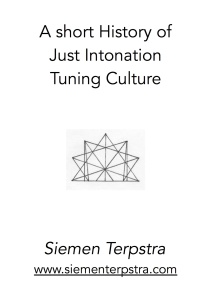 The use of Just Intonation (simple ratios) as a musical tuning norm has a very long and illustrious history. However, this history is also rather complex. I cannot hope to give but the barest outline of an overview in the abbreviated format – it deserves a book. Nevertheless, an essay is a valuable exercise in condensed presentation, although it inevitably has its price. My interpretations of the historical data are sometimes based on long strings of circumstantial evidence, since this is all the information available. Consequently, it is only possible to present a fraction of the arguments that support my conclusions within this brief context. The reader should not forget that this is only one person’s version of the most likely story.
The use of Just Intonation (simple ratios) as a musical tuning norm has a very long and illustrious history. However, this history is also rather complex. I cannot hope to give but the barest outline of an overview in the abbreviated format – it deserves a book. Nevertheless, an essay is a valuable exercise in condensed presentation, although it inevitably has its price. My interpretations of the historical data are sometimes based on long strings of circumstantial evidence, since this is all the information available. Consequently, it is only possible to present a fraction of the arguments that support my conclusions within this brief context. The reader should not forget that this is only one person’s version of the most likely story.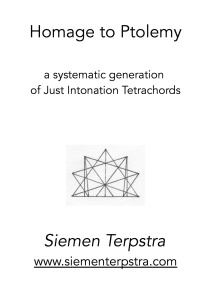 The author generates a handsome collection of tetrachords by using an archaic arithmetical procedure. He embeds various historical tetrachords into the group, with special focus on Ptolemy. He provides historical context. He also presents a generalized classification of tetrachord types. Finally he demonstrates the usefulness of the schisma resolution in modelling the fine grain of n-limit Just Intonation.
The author generates a handsome collection of tetrachords by using an archaic arithmetical procedure. He embeds various historical tetrachords into the group, with special focus on Ptolemy. He provides historical context. He also presents a generalized classification of tetrachord types. Finally he demonstrates the usefulness of the schisma resolution in modelling the fine grain of n-limit Just Intonation.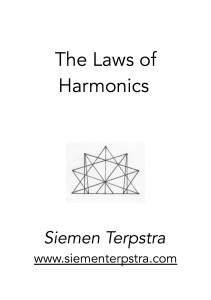 Starting in the middle 1980’s, around the time that I wrote up A Short List of Musical-Cosmological Monochords, I began a patient compilation of diagrams. Most of them consisted of elaborate tables showing numerous just ratios calculated in cents, as well as some speculative monochords and representations of the Harmonic Series. I meant this work to accompany a text that sums up my investigations into Harmonics. Inevitably, it reflected my interests during the seventies and early eighties – just intonation, drone-based music, and monochords. I never got around to writing the text, though I left a couple of pages of notes. After a few years I scrapped the whole project and archived it under the rather imposing heading: The Laws of Harmonics. Recently I dragged it out of its storage to reconsider the project.
Starting in the middle 1980’s, around the time that I wrote up A Short List of Musical-Cosmological Monochords, I began a patient compilation of diagrams. Most of them consisted of elaborate tables showing numerous just ratios calculated in cents, as well as some speculative monochords and representations of the Harmonic Series. I meant this work to accompany a text that sums up my investigations into Harmonics. Inevitably, it reflected my interests during the seventies and early eighties – just intonation, drone-based music, and monochords. I never got around to writing the text, though I left a couple of pages of notes. After a few years I scrapped the whole project and archived it under the rather imposing heading: The Laws of Harmonics. Recently I dragged it out of its storage to reconsider the project.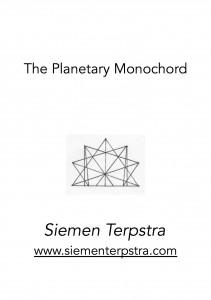 scale.
scale.